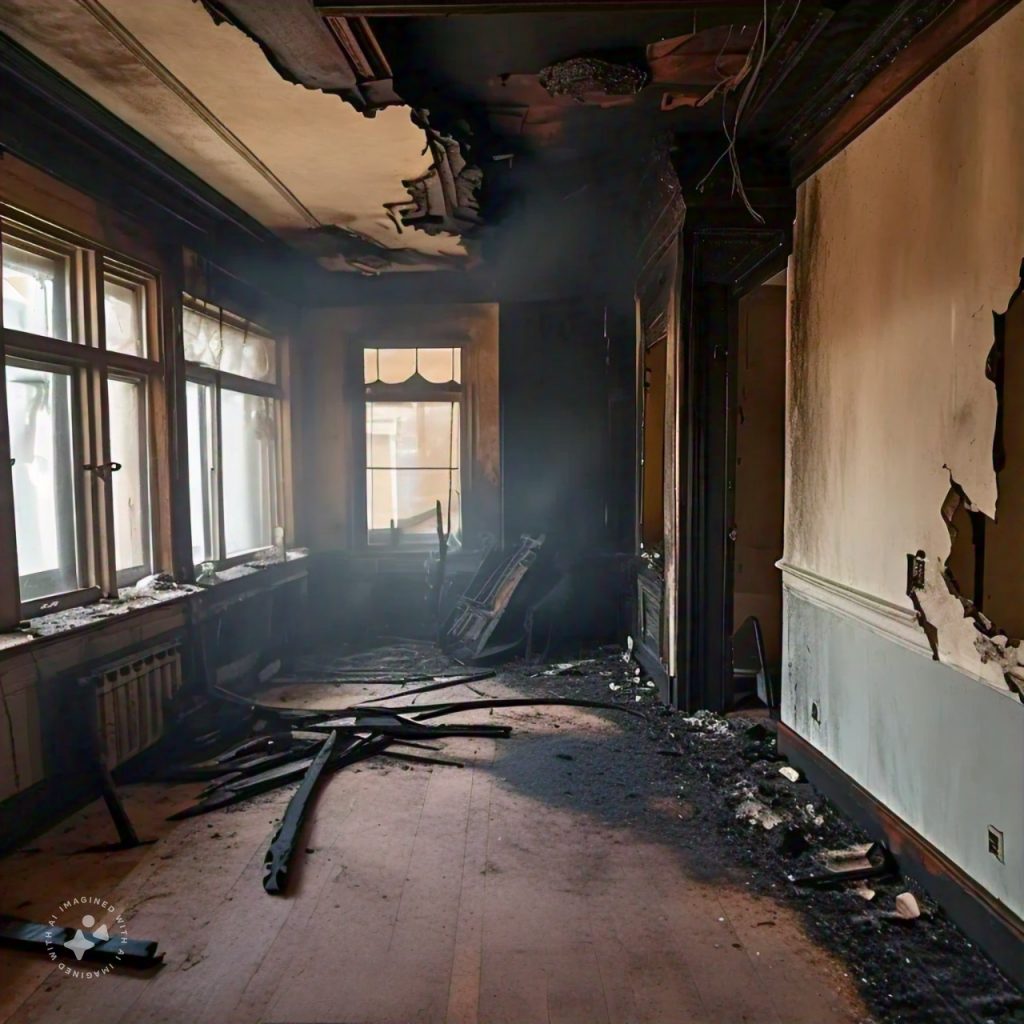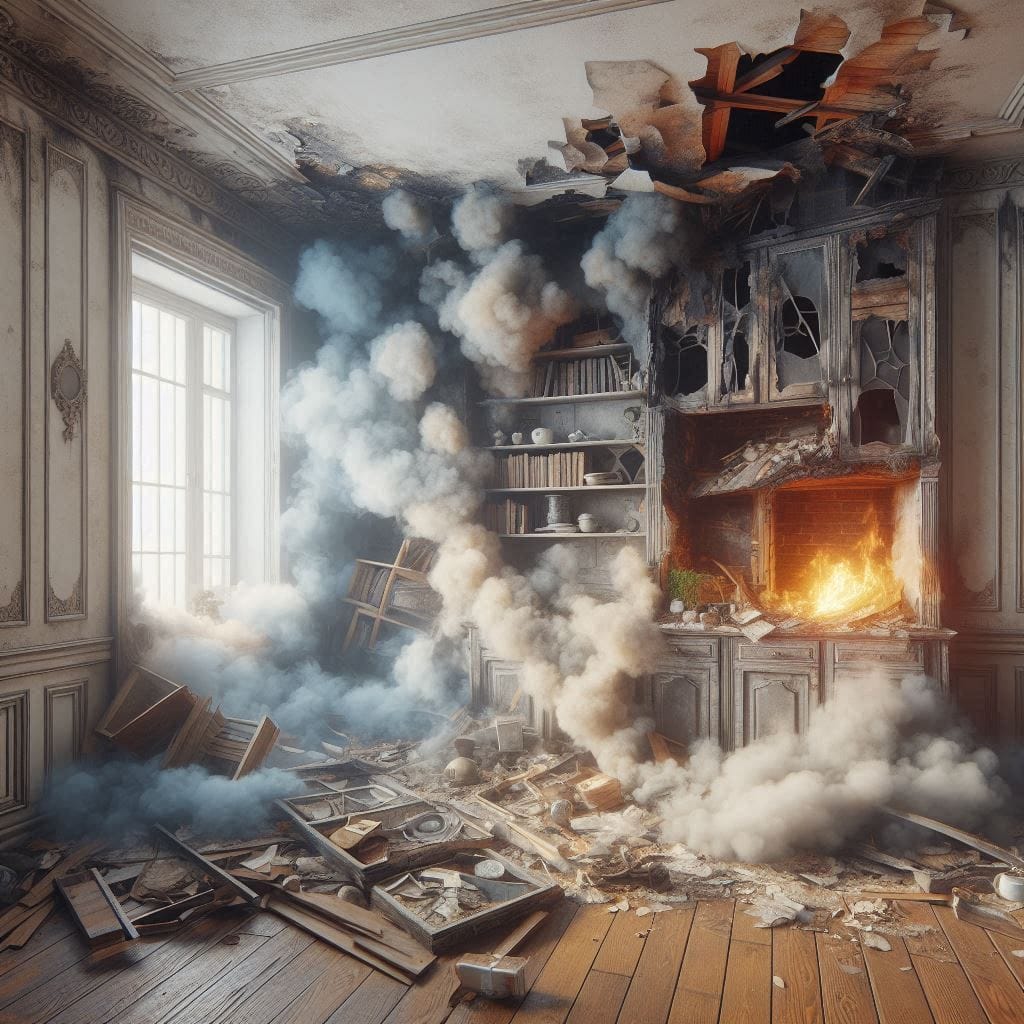Table of Contents
Damages to Properties to avoid: Experiencing a smoke breakout in your home can be overwhelming, and the aftermath leaves lingering damage that requires immediate attention. Even a small incident, like a kitchen fire or electrical short circuit, can lead to smoke and soot settling throughout the house.
For immediate assistance with fire damage restoration, contact PuroClean Disaster Restoration, Call (+1) 317-467-4436
This comprehensive restoration guide will walk you through the essential steps to restore your home, eliminate odors, and ensure your property is safe to live in again.
1. Assessing the Damage
After a smoke breakout, the first step is to assess the extent of the damage. Smoke can spread rapidly throughout a home, affecting more areas than just the source of the fire. Start by identifying:
- Visible Soot and Stains: Soot can settle on walls, ceilings, carpets, and furniture, leaving dark, oily residue.
- Smoke Odor Penetration: Smoke can permeate into fabrics, wood, and walls, causing a lingering odor.
- Structural Damage: Check for signs of burns or weakened materials, especially around the area where the fire or smoke originated.
Take photographs and notes of all visible damage—this documentation can be helpful if you need to file an insurance claim.
You can also use this Property Damage online calculator to get a simple estimate for damages

2. Ensuring Safety Before Starting Restoration
Before diving into restoration, make sure the environment is safe to enter:
- Turn Off Power: If the smoke damage was caused by an electrical fire, switch off the electricity to prevent further risks.
- Wear Protective Gear: Use gloves, masks, and safety goggles to protect yourself from inhaling soot or toxic particles.
- Ventilate the House: Open all windows and doors to allow fresh air to circulate. This helps reduce the concentration of smoke particles in the air.
- Check for Hidden Dangers: Be cautious of weakened ceilings or walls that might collapse due to fire damage.
3. Cleaning Smoke Residue and Soot
Soot is acidic and can cause permanent damage if not cleaned promptly. Here are some steps to remove it effectively:
- Dry Cleaning with a Vacuum: Use a vacuum with a HEPA filter to remove loose soot from surfaces like carpets, curtains, and furniture. Avoid pressing the vacuum head into the surface to prevent staining.
- Using a Dry Sponge: For walls and non-porous surfaces, use a dry chemical sponge designed to absorb soot without smearing it further.
- Washing with Cleaning Solutions: Mix warm water with mild soap, vinegar, or an all-purpose cleaner to wipe surfaces. For heavy soot stains, use trisodium phosphate (TSP), which is more powerful but must be handled with caution.
- Cleaning Fabrics: Wash fabrics like curtains, linens, and clothing with a combination of detergent and vinegar to neutralize odors and remove smoke particles. Dry-clean more delicate materials professionally.
4. Removing Smoke Odors from the House
Even after cleaning, smoke odors can linger. Here are effective methods to remove them:
- Air Purifiers: Place air purifiers with HEPA filters throughout the house to capture remaining smoke particles.
- Baking Soda: Sprinkle baking soda on carpets, upholstery, and rugs. Leave it for a few hours, then vacuum to absorb odors.
- White Vinegar: Place bowls of vinegar around the affected areas to neutralize the smell.
- Activated Charcoal: Use charcoal odor absorbers to eliminate smoke smells from rooms, closets, and drawers.
- Ozone Generators: If the odor is severe, consider renting an ozone generator, which helps break down smoke molecules. However, ozone should be used only when the house is unoccupied due to its toxicity.
5. Restoring Damaged Items and Furniture
Some items might require more than surface cleaning:
- Wooden Furniture: Wipe wooden surfaces with a mixture of vinegar and water, and polish them afterward.
- Electronics: Soot can interfere with electronics, so consider getting them inspected and cleaned professionally to prevent malfunction.
- Soft Furnishings: Sofas, mattresses, and carpets may need professional cleaning services to fully restore them.
- Clothing and Linens: Launder items using odor-neutralizing detergents or take them to a dry cleaner experienced with smoke damage.
6. Repairing Walls, Ceilings, and Floors
In some cases, smoke and soot may require deeper repairs beyond cleaning:
- Repainting Walls and Ceilings: If smoke stains are persistent, you may need to repaint. Use a primer designed to seal smoke stains before applying a fresh coat of paint.
- Replacing Damaged Drywall: If the drywall is badly damaged or smells of smoke, consider replacing it entirely.
- Cleaning or Replacing Flooring: For wooden floors, sanding and refinishing may be required. Carpets that are severely damaged may need to be replaced.
7. When to Call a Professional
While DIY methods can handle light smoke damage, severe cases may require professional help:
- Smoke Restoration Companies: Companies like PuroClean specialize in smoke damage restoration and use advanced equipment like ozone machines and thermal foggers to remove odors.
- Insurance Claims: If the damage is extensive, work with your insurance company to cover the restoration costs. A professional restoration company can assist with documentation and claims processing.
- Asbestos or Mold Issues: If the fire caused exposure to hazardous materials such as asbestos or mold, it’s critical to hire certified professionals to handle the cleanup safely.
8. Preventing Future Smoke Damage
Prevention is the best way to avoid another smoke breakout. Here are some tips:
- Install Smoke Detectors: Ensure smoke detectors are installed in every room and test them regularly.
- Use Fire-Resistant Materials: When renovating, consider using fire-resistant paints, drywall, and insulation.
- Maintain Appliances: Regularly inspect and maintain appliances like stoves, heaters, and dryers to prevent malfunctions that could lead to smoke or fire.
- Create an Emergency Plan: Develop and practice an evacuation plan with your family in case of future emergencies.
Conclusion
Restoring your home after a smoke breakout requires thorough cleaning, odor removal, and sometimes professional assistance. Acting quickly helps minimize further damage and ensures your living space is safe again. Whether it’s a small incident or extensive smoke damage, following this simple restoration guide will help you restore your home efficiently and effectively. For severe cases, consulting with professionals like PuroClean ensures expert handling and peace of mind.
By combining immediate action with preventive measures, you can reduce the impact of future incidents and maintain a safer, healthier home environment.

